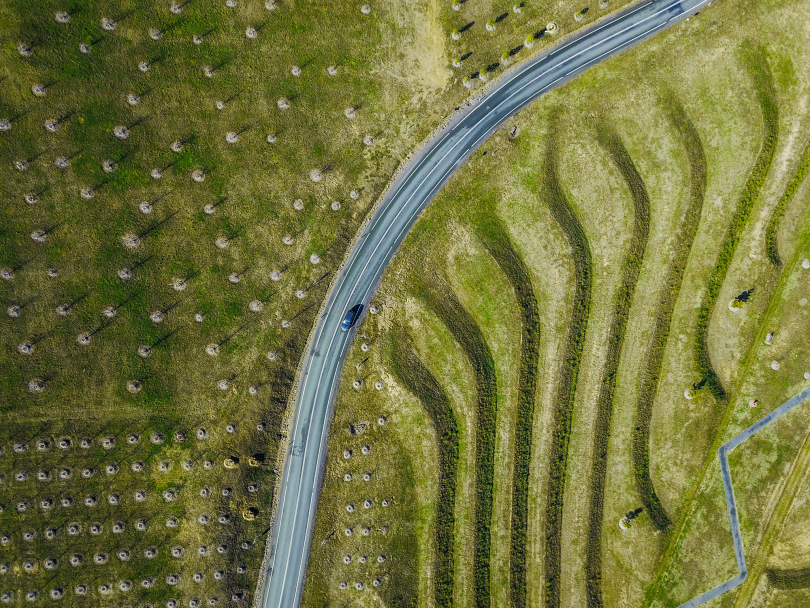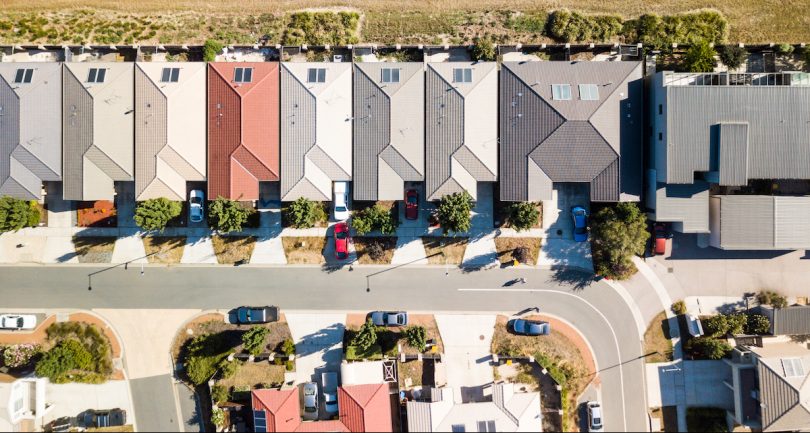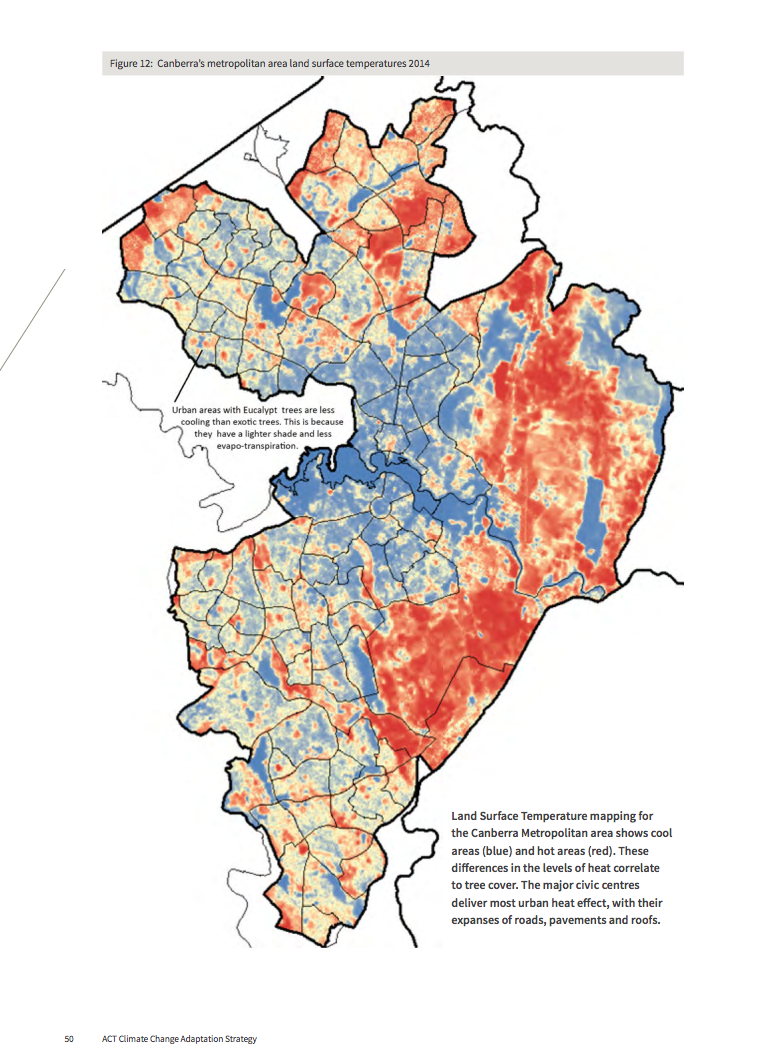
National Arboretum. Photo: Jack Mohr.
Driving through the new housing estates on Canberra’s North Side last week, I couldn’t help but think the landscape is becoming rapidly reminiscent of Western Sydney’s congested sprawl of cookie-cutter homes. There are big houses on small blocks and a narrow labyrinth of streets that don’t flow on to each other. What sticks out the most though is the complete lack of greenery. Bushland is lapping at the edges begging to integrate with the new development but we, as consumers, are not having a bar of it.

Aerial View of Dunlop. Photo: Jack Mohr
Over a century has passed since one of Canberra’s most prominent visionaries got to work with the afforestation of this once empty sheep station. Charles Weston, Horticulturist and Arboriculturist, was tasked with reversing the degradation of the site and establishing a truly unique landscape worthy of the Nation’s Capital.
100 years later and we are at risk of losing our green identity. In the quest for jobs, money, and growth, we have forgotten the true soul of “The Bush Capital”.
Our city’s connection with the bush is slowly but surely diminishing. We ignore studies and data on not only the ecological but also the health and productivity benefits the green landscape promotes. Energy efficiency ratings are mandatory but without the plant cover, we’re cooking the streets and roofs and trapping the heat. Our beautiful mid-century vernacular architecture has been replaced with concrete blocks with no consideration for gardens. ‘Just whack an air conditioner in and she’ll be right’ is the common attitude to modern-day Canberra house design.
Why is there not a push to incorporate biophilic design elements into our homes? Kellert, Heerwagen and Mador’s “Biophilic Design: The Theory, Science and Practice of Bringing Buildings to Life” indicates the benefits of incorporating these natural design elements include the cooling of the city through the reduction of the Urban Heat Island effect, reduced energy needs in buildings as a result of the added insulation plant life provides, improved biodiversity, and improved health. The CSIRO’s urban heat-mapping data (as incorporated in the ACT’s Climate Change Adaption Strategy) show the new estates light up like a Christmas tree with greater surface temperatures recorded on a hot day than that of the established leafy counterparts.

Canberra’s Metropolitan Land Surface Temperatures 2014
Source: ACT Climate Change Adaption Strategy.
The ACT Treasury predicts that Canberra will grow by another 100,000 people within the next 20 years. That could spell many more poorly planned estates that do not harness the image Charles Weston worked so hard to cultivate.
If we’re not careful, an innocent trim of the bikini line may turn into a full-blown Brazilian.
Would you like to see better landscape planning in new estates?













